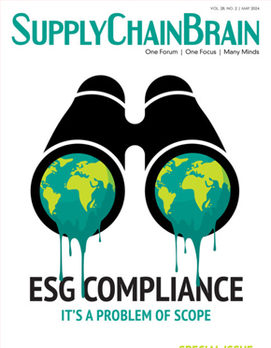
The conventional notion about online shoppers is that they want it now, and they want it for free. But a new study refutes that assumption, at least partially.
Capgemini recently surveyed nearly 3,000 consumers and 500 supply-chain executives of large consumer-products and retail companies, with a focus on the food and grocery segment. It found that 38 percent of U.S. shoppers already order groceries online once or more a week, with that number expected to grow to 52 percent by 2021.
The rise in online commerce is to be expected, but the rapid growth of grocery items came as something of a surprise, according to Cyndi Fulk Lago, vice president of consumer products and distribution with Capgemini. “In retail, it’s been [growing] for 20 years,” she says. It literally happened overnight for grocery.”
The push for increased activity online comes from an industry with historically thin margins and intense competition. Increasingly, says Lago, grocery retailers are coming to view e-commerce as “table stakes.”
As with all online sales, the question arises as to how much consumers are willing to pay for expedited or last-mile service. Many general e-tailers have been forced to absorb the additional cost involved, offering free shipping on orders above a certain amount.
Amazon broke that mold by introducing Prime membership, now at $119 a year, which includes “free” two-day shipping for many items. The move signaled the beginning of e-tailers’ attempts to “retrain” consumers who had becoming accustomed to paying nothing for expedited shipping.
For consumers, speed remains a critical factor in choosing where they’ll shop online. Half of those surveyed by Capgemini said they would switch retailers if a competitor offered faster service.
What they’re willing to pay for speed is another question. The survey found just 14 percent saying they would pay more for two-hour delivery.
That’s not enough to cover the cost of the service, however. “Customer needs are met at the expense of profitability,” the Capgemini study says, noting that last-mile delivery accounts for 41 percent of total supply-chain costs. Yet e-tailers only charge 80 percent of that expense.
Survey respondents were willing to pay between 10 and 15 percent of the total purchase price, Lago notes. But that number shrinks in importance when it’s applied to small orders. And the average “basket size” isn’t nearly as big for orders placed on line, versus purchases made at a physical store.
With online grocery sales expected to grow, retailers need new strategies for closing the cost gap. One is giving the deliverer access to the buyer’s home at some point during the day, by way of a secure code. That allows the merchant to pool deliveries to a entire neighborhood, instead of adhering to two-hour windows for each individual order.
Another possible solution is the use of “dark stores,” retail locations that are actually distribution centers and therefore have lower labor costs. Or the retailer can designate a section of a store for automated picking operations, draw on shelf stock instead of having to ship from more distant warehouses. (In the grocery business, a number of products are shipped by vendors straight to the store.)
The seller can reap additional income from creative services such as at-home wine tastings, for which customers expect to pay a fee. “Retailers have to look at the bigger picture — not individual transactions — to engage the customer,” says Lago.
There’s nothing new about running a profitable retail operation with rapid delivery to the doorstep. Pizza parlors and florists have been doing it for decades. Most will build the cost of delivery into the price of the product. But there’s no one answer to the problem of covering that expense, says Lago. Retailers need to take into account multiple factors, such as the characteristics of a given neighborhood, proximity of stores and distribution centers to buyers, and what type of service they’re willing to settle for. Only then can they determine which fulfillment operations are the most economical.
Automation is key to long-term profitability of the online grocery business. Backroom systems at retail stores are growing in sophistication, making direct fulfillment more feasible. According to the Capgemini study, backroom automation could boost profit margins by 14 percent. In addition, half of the surveyed consumers said they were open to innovations such as smart locks, which allow for deliveries when no one is home.
Whether grocery retailers can fully close the gap between the cost of last-mile service and income from delivery fees remains uncertain. But the push for innovative strategies continues. Says Lago: “They’re not standing still.”




.jpg?height=100&t=1715228265&width=150)


